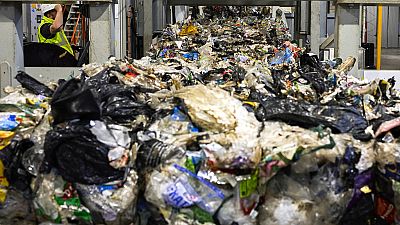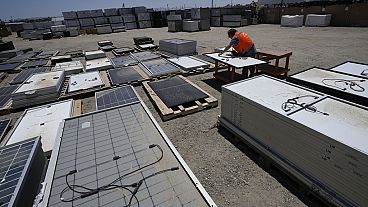In the USA, transportation is the largest single cause of emissions, releasing 27 per cent of the country’s total emissions. New EV targets could change that.
The US is considering tough new rules that would require two-thirds of new vehicles to be electric by 2032.
The proposed regulations – revealed by the Biden Administration’s Environmental Protection Agency yesterday – would set tough greenhouse gas emissions limits on the car industry.
In practice, these limits would require companies to rapidly shift a majority of their products from petrol to battery-powered by 2032..
The plans are expected to be finalised next year.
The EU already has plans in place that will require 100 per cent of new cars to be electric by 2035, making America’s plans more ambitious.
How significant are the rule changes?
EPA Administrator Michael S. Regan called the proposals “the most ambitious pollution standards ever for cars and trucks.”
“[This will] secure critical reductions in dangerous air and climate pollution and ensuring significant economic benefits like lower fuel and maintenance costs for families.”
Last year, just 5.8 per cent of vehicles sold in the USA were electric – meaning the new proposals could increase EV sales more than tenfold. By comparison, European sales reached 15.7 per cent of new car registrations in 2021, up from 10.5% in 2020.
What are America’s new electric vehicle rules?
The new rules wouldn’t expressly cap the number of petrol-powered cars that can be sold – but they would limit the amount of CO2 that can be emitted by new cars and light trucks. Automobile manufacturers will have to scale down pollution by 13 per cent per year.
In practice, this mandate means that automobile makers will have to limit petrol car production.
The EPA projects that under the new rules at least 60 per cent of new passenger vehicles sold in the US would be electric by 2030, with this number increasing to 67 per cent by 2032.
For medium-duty trucks, the EPA projects 46 per cent of new vehicle sales will be EVs in 2032.
These goals mark a sharp increase on the Biden Administration’s previous EV targets.
In 2021, President Biden pledged to make EVs half of US new car sales by 2030.
The new policies still have to go through a public comment period, and could meet with legal challenges before they can be implemented.
What has the reaction been to the proposed rules?
John Bozzella, president of the Alliance for Automotive Innovation, described the move as a “massive undertaking.”
“It is nothing short of a complete transformation of the automotive industrial base and the automotive market,” he said.
“Factors outside the vehicle, like charging infrastructure, supply chains, grid resiliency, the availability of low-carbon fuels and critical minerals will determine whether EPA standards at these levels are achievable.”
What will the climate impact of these policies be?
Petrol-powered cars are terrible for the planet, spewing out toxic CO2 and air pollution. In the USA, transportation is the largest single cause of emissions, releasing 27 per cent of the country’s total emissions.
Electric vehicles aren’t an environmental silver bullet, but they emit much less carbon dioxide.
Through to 2055, the EPA projects that the proposed standards would avoid nearly 10 billion tons of CO2 emissions. This is equivalent to more than twice the total US CO2 emissions in 2022.
The rules would also reduce oil imports by approximately 20 billion barrels.
Environmental groups have welcomed the ambitious limits, which will also stem air pollution.
“The EPA clean air proposals announced today will slash billions of tons of climate pollution, along with health-harming pollution that causes thousands of premature deaths annually,” said Fred Krupp, president of the Environmental Defense Fund.
How do America’s EV rules compare to Europe’s?
The new proposals would put America at the forefront of the electric vehicle transition.
But the push to decarbonise transport is also a major part of the EU’s plan to reach net zero by 2050.
In February, the European Parliament voted to approve a new law effectively banning the sale of petrol and diesel cars from 2035. To facilitate this change, the bloc plans to deploy at least one million public charging points for EVs by 2025.
As an intermediary step towards zero emissions, the EU will require the average emissions of new cars to come down by 55 per cent by 2030, and new vans by 50 per cent by 2030.
Several European countries are already well on the way to this target. In Norway, electric cars accounted for over 70 per cent of new car sales in 2021 – the highest market share in the world.
The Netherlands has the second-highest market share of electric cars in Europe, with electric cars accounting for around 20 per cent of new car sales in 2021.
The governments in both countries offer generous subsidies for EV manufacturers, tax exemptions for EV drivers, and free tolls and parking for electric cars.


















